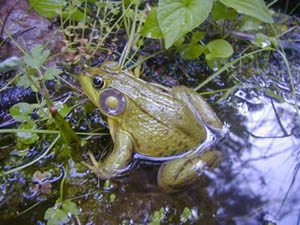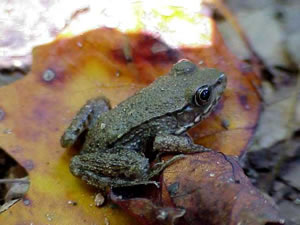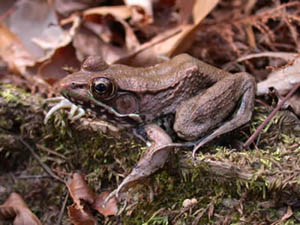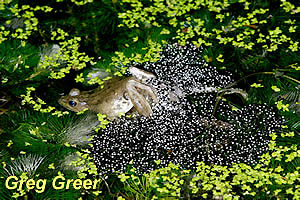Green / Bronze Frog (Lithobates clamitans)
Green Frog (Lithobates clamitans)
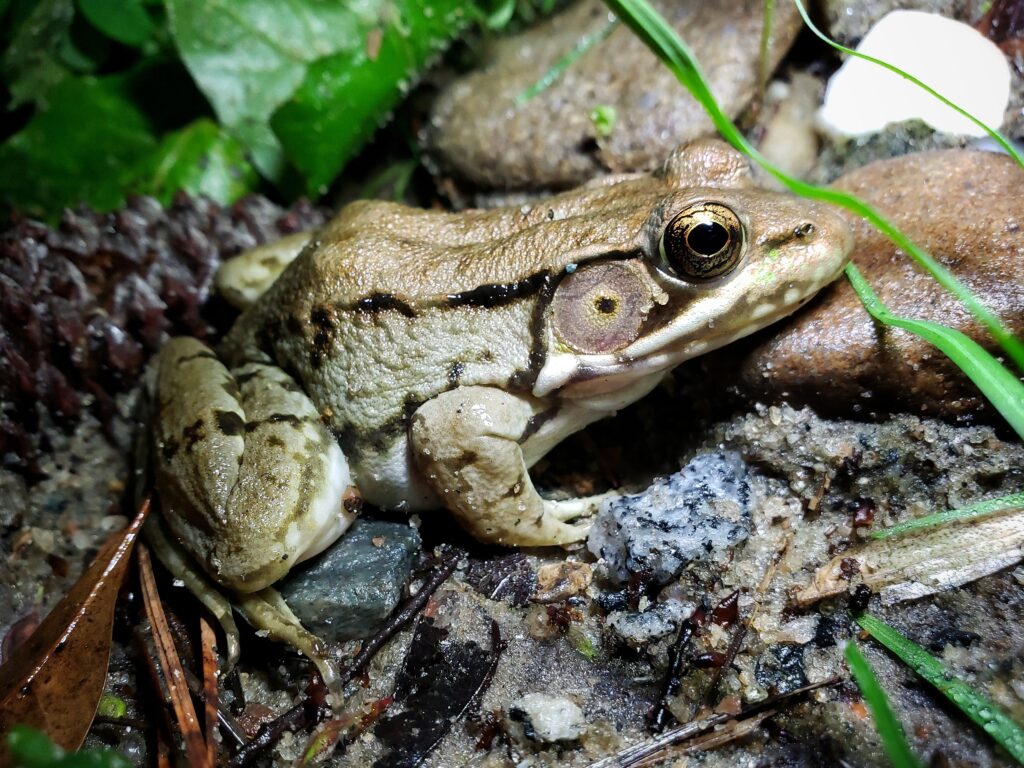

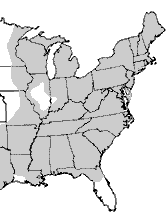
Green Frog Call
Description: A medium-sized frog reaching up to 7.5 cm (3 in). Coloration ranges from bright green to bronze or brown, with many individuals showing both. The belly is whitish with gray mottling, and males typically have a yellow throat. Skin is mostly smooth but may have small dorsal bumps. Prominent dorsolateral ridges extend from the eyes along the back, distinguishing this species from the American bullfrog (L. catesbeianus), which lacks ridges.
Range and Habitat: Widespread across the southeastern United States. Found in permanent freshwater habitats, including ponds, lakes, streams, marshes, and swamps.
Habits: Active both day and night, remaining close to water. Adults generally have a small home range of about one acre. They overwinter in unfrozen aquatic habitats such as streams or under damp ground litter. Opportunistic predators feeding on insects, spiders, worms, crayfish, millipedes, centipedes, small frogs, and slugs. Tadpoles consume algae, detritus, and occasionally frog eggs. Breeding occurs from March through September. Males establish territories and defend them with calls, posturing, and combat. Females lay 1,000–7,000 eggs in floating sheets or clusters; tadpoles metamorphose in about 3 months.
Call: A twangy “plunk,” often compared to a loose banjo string sound.
Interesting Facts:
- The green frog is commonly called a “bronze frog” because it is often a bronze color.
Conservation Status: Widespread throughout its range. Not of immediate conservation concern, though local declines may occur due to habitat loss and wetland destruction.
